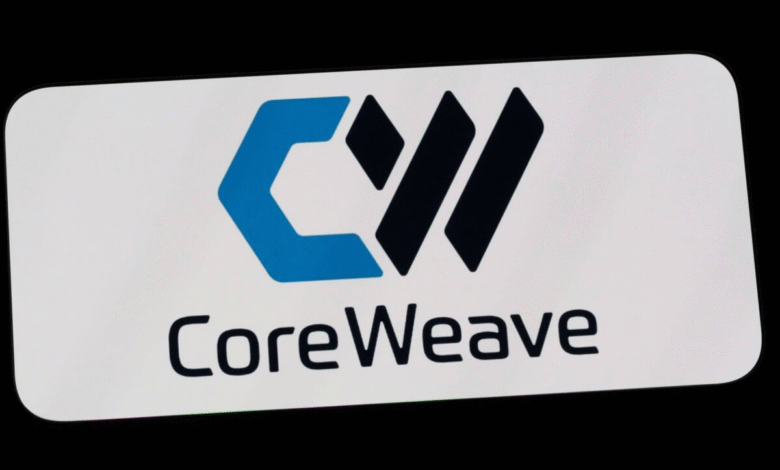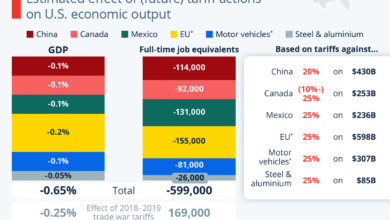CoreWeave Earnings Report Shows Revenue Growth Despite Losses

The CoreWeave earnings report has revealed intriguing insights into the company’s financial performance, showcasing a mix of growth and challenges. Despite a significant revenue increase to $1.21 billion, exceeding analyst expectations, CoreWeave shares fell 9% in after-hours trading, reflecting investor concerns over continuing losses. As an emerging AI infrastructure provider, the company has seen its revenue more than triple compared to last year, driven by soaring demand for Nvidia chips rental in the competitive cloud marketplace. However, high stock-based compensation expenses contributed to a drop in operating margin, which warrants careful attention. Looking ahead, CoreWeave aims to enhance its market position with new revenue projections that signal robust growth in the AI sector.
In the latest financial disclosures, the CoreWeave financial overview highlights both the potential and hurdles faced post-IPO. The company’s recent earnings report demonstrates substantial revenue growth, indicating a thriving market presence as a key player in AI infrastructure solutions. Despite experiencing losses, CoreWeave’s focus on Nvidia chip rentals positions it strategically against major industry competitors. Moreover, the anticipated revenue for the upcoming quarter aligns with upward forecasts, suggesting optimism in shareholder confidence. As CoreWeave continues to navigate its evolution in the tech landscape, its trajectory will be closely monitored by both analysts and investors alike.
CoreWeave Earnings Report Analysis
The latest CoreWeave earnings report showcases a complex financial landscape for the company, with a reported revenue of $1.21 billion, significantly exceeding the LSEG consensus estimate of $1.08 billion. Despite this positive revenue growth, CoreWeave experienced a 9% decline in its stock price during after-hours trading, primarily due to a recorded loss of 21 cents per share. This situation highlights the dichotomy often faced by companies in high-growth industries, especially when the results shine a light on both substantial gains in revenue alongside notable net losses, such as the $290.5 million reported for the quarter.
Nitin Agrawal, Chief Financial Officer at CoreWeave, indicated that the company’s remarkable 174% revenue growth compared to the previous year is a clear indication of increasing demand for AI infrastructure services. However, he emphasized that capacity constraints are a significant challenge, which could explain the market’s lukewarm reaction to the earnings report. The increasing competition in the sector, particularly in the rental of Nvidia chips, adds pressure to CoreWeave’s operating margins, which recently dropped from 20% to just 2%. Understanding these nuances in CoreWeave’s earnings report is essential for investors to navigate the volatile stock performance in the AI sector.
CoreWeave has also indicated an optimistic outlook for future quarters, projecting revenues between $1.26 billion and $1.30 billion, which is a slight improvement over analysts’ expectations. This forecast reflects a continued commitment to growth and could potentially stabilize investor confidence looking forward. With the anticipated revenue for 2025 now forecast at between $5.15 billion and $5.35 billion, the potential for scalability remains high, despite current operating challenges. Investors must weigh these optimistic long-term projections against the backdrop of CoreWeave’s current losses and debt situation.
Moreover, the impending launch of a data center in New Jersey, expected to deliver substantial capacity by 2026, indicates CoreWeave’s strategic focus on enhancing its infrastructure to meet surging demand for AI solutions. As the market evolves, the ability of CoreWeave to effectively manage its operational efficiencies while expanding its service offerings will crucially determine its future financial health and stock performance.
CoreWeave Revenue Growth and Stock Performance
CoreWeave’s remarkable revenue growth, tripling from $395.4 million in the previous year to $1.21 billion, showcases the company’s agility and strong positioning within the AI infrastructure market. This stellar growth rate of about 174% is particularly noteworthy given the competitive landscape, where traditional cloud providers are aggressive in securing market share for AI-related services. The substantial revenue influx is largely attributed to partnerships with major clients, including OpenAI, underscoring CoreWeave’s reputation as a go-to provider for advanced GPU rental services.
Despite these positive metrics, the company’s stock performance remains a roller coaster, evidenced by the recent 9% decline following its earnings report. While many investors are optimistic about the long-term growth prospects, CoreWeave’s losses and increasing debt — totaling $11.1 billion — create a tension between growth and sustainability. The key for investors will be understanding how the company’s robust revenue growth can ultimately translate to improved profitability and stock value in the future.
In the face of rising industry demands, CoreWeave’s strategic investments in enhancing its infrastructure are critical. The addition of a capacity for 250 megawatts with the New Jersey data center project positions the company favorably to meet future demands. Furthermore, the anticipated offering of spot-based GPU rentals aims to provide flexibility and cost efficiency for clients, which could further solidify CoreWeave’s market position and positively impact future revenue growth, enhancing overall stock performance.
As investors monitor these developments, the interplay between revenue growth and operational challenges will be key to assessing CoreWeave’s market trajectory. Investing in AI infrastructure remains a high-stakes game, with CoreWeave poised at the forefront, leveraging its innovative strategies to remain competitive.
CoreWeave’s Competitive Landscape in AI Infrastructure
CoreWeave operates in a highly competitive landscape as an AI infrastructure provider, where competition from established cloud giants like Amazon creates significant pressure. The company’s model focuses on renting Nvidia chips, which are vital for many AI applications. In the report, CoreWeave’s CFO pointed out that the demand for rental services often outstrips supply, complicating their capacity management and potentially stunting future growth amidst increasing costs and operational losses.
Moreover, CoreWeave’s recent acquisition of Weights and Biases for $1.4 billion illustrates their commitment to bolstering their AI offerings and staying ahead of the curve. By integrating advanced AI model monitoring tools, CoreWeave aims to provide a more comprehensive service to its clients, which could strengthen its competitive position in an industry rapidly evolving to incorporate sophisticated AI technologies. This strategic move signifies CoreWeave’s intent to create a robust ecosystem that supports its diverse client needs as they continue to scale.
Despite facing challenges such as a decrease in operating margins and heightened debt levels, CoreWeave remains optimistic about its growth trajectory. The increased collaboration with significant financial institutions like Goldman Sachs and Morgan Stanley is expected to bolster its services and elevate its market presence. As these partnerships mature and contribute to revenue, they will also likely enhance investor confidence amid fluctuating stock prices.
Thus, understanding CoreWeave’s competitive landscape involves recognizing the delicate balance between innovation, operational efficiency, and financial health. The company’s strategies to carve out market share in a crowded field are vital, and ongoing financial performance will be crucial to maintaining its growth amidst the demands of a changing technological ecosystem.
Future Projections for CoreWeave
Looking ahead, CoreWeave presents a promising yet challenging outlook as it projects revenue between $5.15 billion and $5.35 billion for 2025. This optimistic estimate is a significant upward revision from earlier expectations and is indicative of the company’s aggressive approach to capturing market share in the AI infrastructure sector. By aligning their business strategies with rising demand, CoreWeave positions itself to benefit substantially as companies around the globe increasingly adopt AI technologies.
However, achieving these ambitious projections requires overcoming various operational hurdles, including their current net loss situation and managing substantial debt levels. The complexities involved in scaling AI infrastructure solutions amidst fluctuating demands further complicate CoreWeave’s growth strategy. Investors will need to maintain a cautious eye on the company’s ability to navigate these challenges while effectively leveraging its revenue growth to convert losses into profits.
The anticipated launch of the New Jersey data center is another critical component of CoreWeave’s growth strategy. This facility is expected to enhance their capacity and allow for more flexible GPU rental options, which could be a game-changer for attracting new clients and fulfilling existing contracts. The shift to spot-based GPU rentals, slated for later this year, may not only improve operational efficiencies but also provide customers with more economical solutions — a win-win scenario for both CoreWeave and its clientele.
In conclusion, while the future for CoreWeave appears promising, marked by strong revenue growth and strategic plans, the journey ahead will require adept navigation through financial challenges and market competition. The ability to capitalize on growth opportunities and turn projections into reality will ultimately determine the company’s success in the dynamic AI infrastructure landscape.
Frequently Asked Questions
What are the key highlights from the latest CoreWeave earnings report?
The latest CoreWeave earnings report revealed a revenue of $1.21 billion, significantly exceeding the expected $1.08 billion. Despite reporting a loss of 21 cents per share and a net loss of $290.5 million, the company’s revenue more than tripled compared to the previous year. CoreWeave also projects a 174% revenue growth rate for 2025, indicating robust performance in the AI infrastructure market.
How did CoreWeave stock perform after the earnings report?
Following the earnings report, CoreWeave stock fell by 9% in after-hours trading. This dip occurred despite the company’s guidance exceeding market expectations, as investors reacted to news of a continued net loss and an increase in debt.
What factors contributed to CoreWeave’s revenue growth in the latest earnings report?
CoreWeave’s substantial revenue growth, as highlighted in the earnings report, can be attributed to increasing demand for AI infrastructure services, particularly in renting Nvidia chips. The company’s partnerships with key clients like OpenAI also play a significant role in driving this revenue growth.
What is CoreWeave’s projection for revenue growth in 2025?
CoreWeave projects its total revenue for 2025 to range between $5.15 billion and $5.35 billion, reflecting a forecasted growth rate of 174%. This estimate marks an increase from previous projections and signals strong future prospects for CoreWeave in the AI infrastructure sector.
How has CoreWeave’s debt level changed according to the earnings report?
CoreWeave’s debt has reached $11.1 billion as reported in the latest earnings report. This increase in debt, alongside significant stock-based compensation expenses, contributed to the company’s operating margin decrease.
What strategic acquisitions did CoreWeave make recently?
In its latest earnings report, CoreWeave announced the acquisition of Weights and Biases for $1.4 billion. This company specializes in software that monitors AI models, demonstrating CoreWeave’s commitment to enhancing its AI infrastructure capabilities.
What are the expectations for CoreWeave’s future earnings and stock performance?
CoreWeave anticipates revenues between $1.26 billion and $1.30 billion for the upcoming quarter. With strong projections for 2025 and significant contract wins, the company’s stock performance is closely watched as analysts evaluate its growth potential in a competitive AI infrastructure market.
How does CoreWeave compare to other AI infrastructure providers?
CoreWeave competes with major cloud providers like Amazon in the AI infrastructure market, particularly in the rental of Nvidia chips. The company’s strong revenue growth and strategic partnerships with industry leaders such as Goldman Sachs and Morgan Stanley indicate its competitive positioning in the sector.
What are the future plans for CoreWeave regarding their data center capacity?
CoreWeave is developing a data center project in New Jersey with a capacity of up to 250 megawatts, expected to be operational by 2026. This expansion highlights the company’s commitment to increasing its capacity to meet the growing demand for AI infrastructure services.
| Key Metric | Value | Comparison to Expectations |
|---|---|---|
| Earnings per Share | Loss of 21 cents | Not Immediately Comparable with LSEG Estimates |
| Revenue | $1.21 billion | Exceeded expectations of $1.08 billion |
| Yearly Revenue Growth | Tripled from $395.4 million previous year | Strong growth noted despite losses |
| Net Loss | $290.5 million | Improved from $323 million loss one quarter ago |
| Operating Margin | 2% | Down from 20% year ago |
| Debt Level | $11.1 billion | Significant increase noted |
| Future Revenue Projections | $5.15 – $5.35 billion for 2025 | Increase from previous estimates of $4.9 – $5.1 billion |
Summary
The CoreWeave earnings report shows a resilient company that is pushing through challenging conditions, as evidenced by its impressive revenue growth despite a net loss. Although shares fell by 9% post-report, the company exceeded revenue expectations, reporting $1.21 billion against an estimated $1.08 billion, indicating strong market demand for its AI infrastructure. The improvements from prior quarters and strategic expansions, including partnerships with major players like OpenAI, highlight CoreWeave’s potential for growth in the competitive landscape. With a projected revenue of $5.15 to $5.35 billion for 2025, CoreWeave’s ongoing initiatives and investment strategies appear promising for future performance in the AI market.




